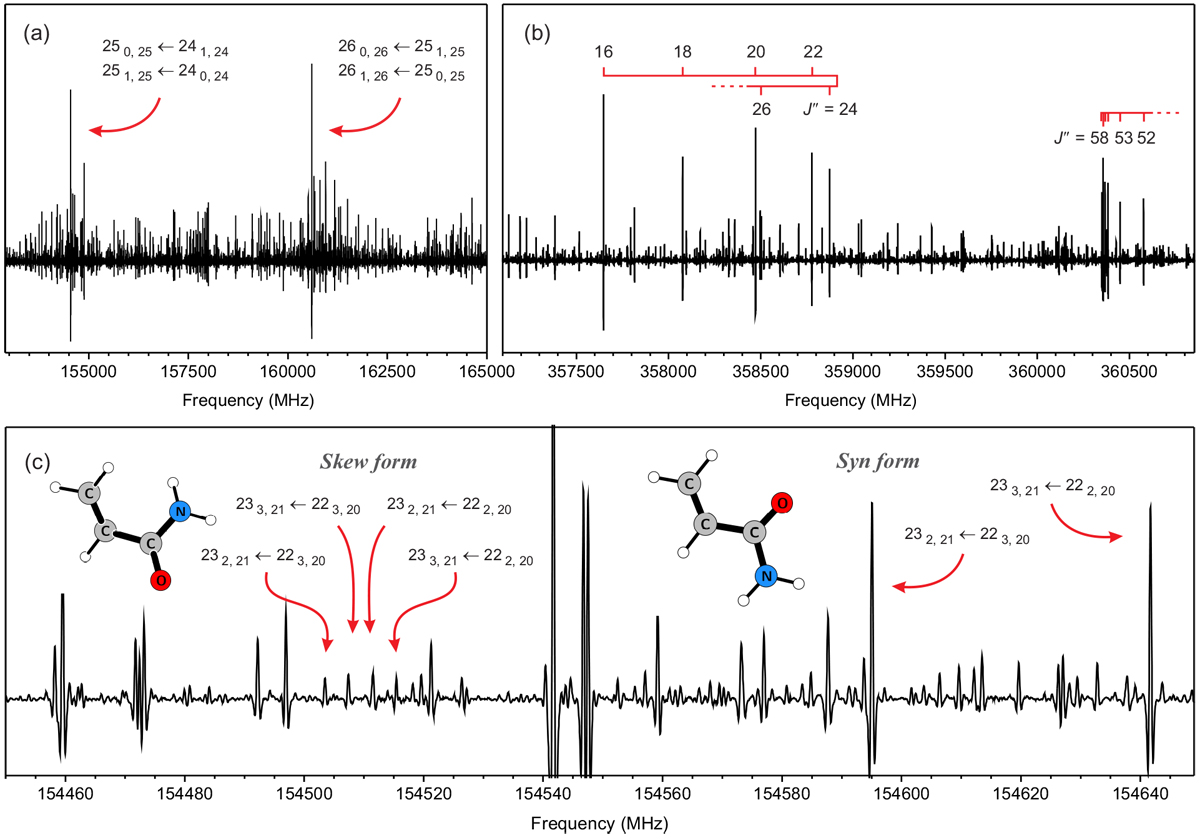Fig. 2

Download original image
Main features in the room-temperature rotational spectrum of acrylamide. (a) Strong lines of the syn conformer in the millimeter wave region consisting of a pair of b-type transitions involving Ka = 0, 1 and Kc = J energy levels. (b) Groups of b-type R-branch transitions near the sub-millimeter wave region. A diffuse group on the left embraces doubly degenerate transitions with the same Ka. Here, the leading transition is J = Ka = 17 ← 16 and the value of J increases by 2 while the value of Ka decreases by 1 with each successive line. The compact group on the right encompasses degenerate transitions with two different Ka. In the present group, degenerate Ka = 0, 1, Ka = 1, 2, ... Ka = 6, 7 transitions are observed. Only J quantum numbers are labeled with the red combs for simplicity. (c) A portion of the spectrum showing the rotational transitions of syn and skew acrylamide that involve 22 2,20 and 22 3,20 energy levels. While two a-type and two b-type transitions are observed for the skew conformer, only two b-type transitions are found for the syn form in agreement with their dipole moment components.
Current usage metrics show cumulative count of Article Views (full-text article views including HTML views, PDF and ePub downloads, according to the available data) and Abstracts Views on Vision4Press platform.
Data correspond to usage on the plateform after 2015. The current usage metrics is available 48-96 hours after online publication and is updated daily on week days.
Initial download of the metrics may take a while.


